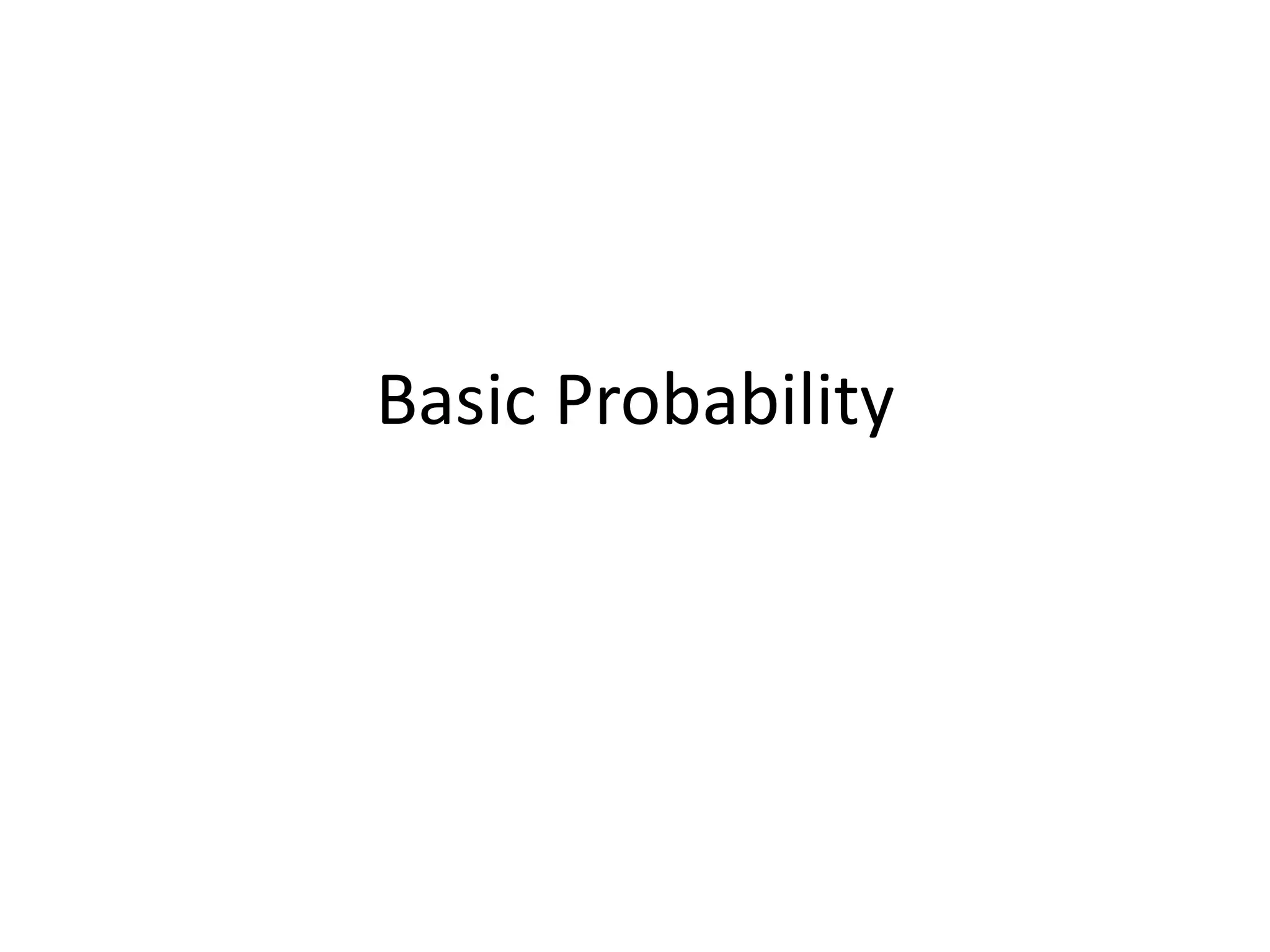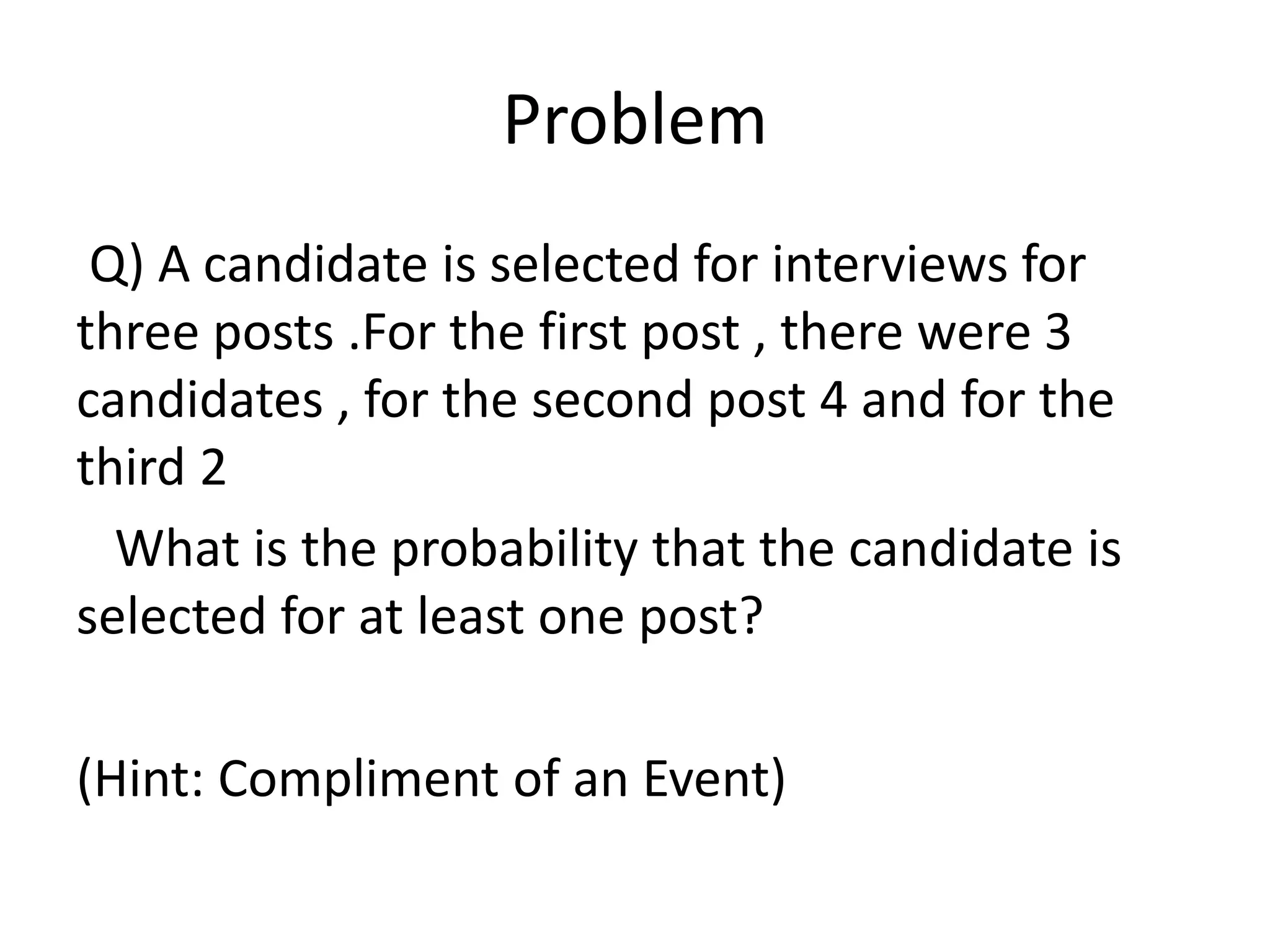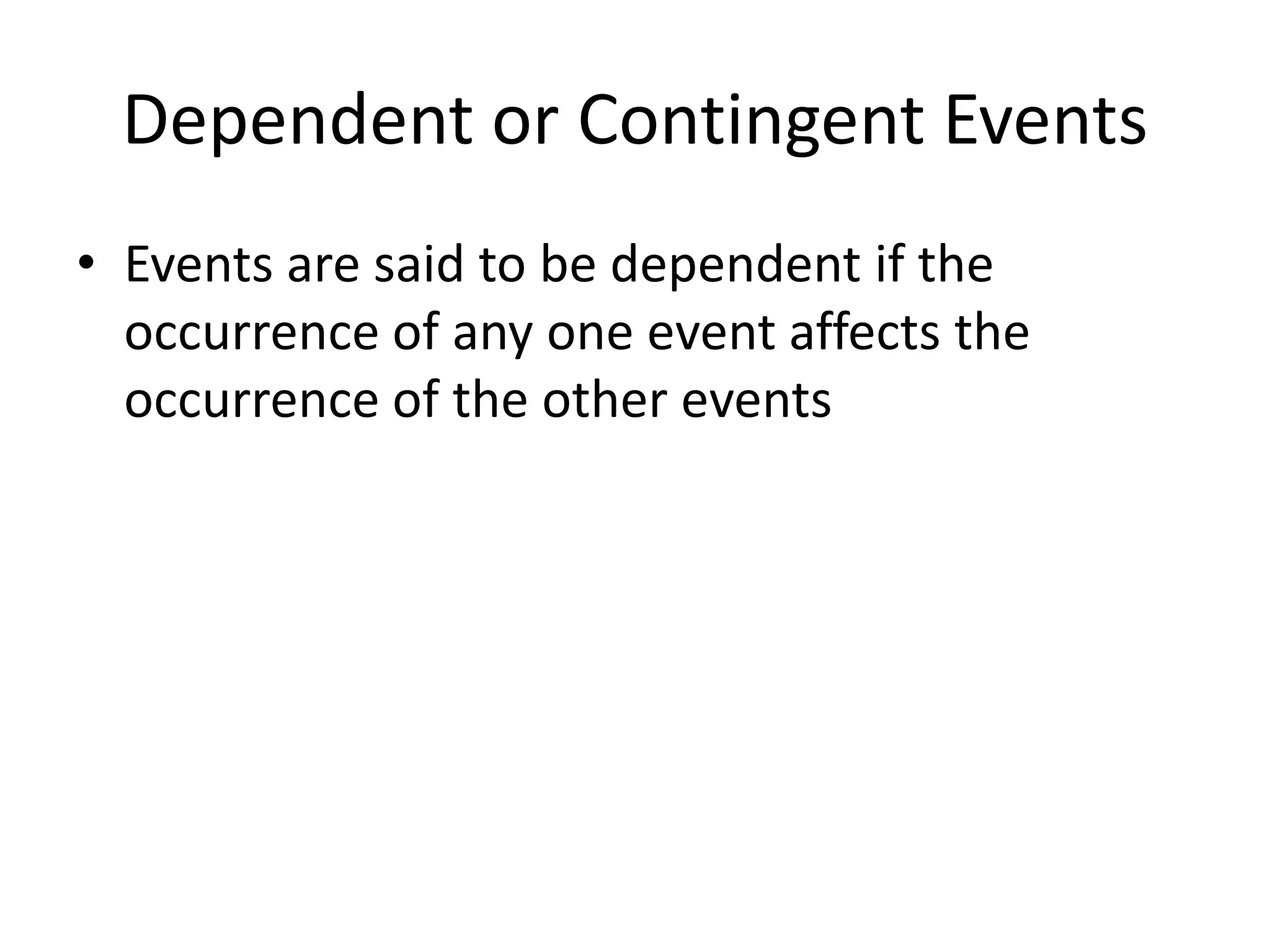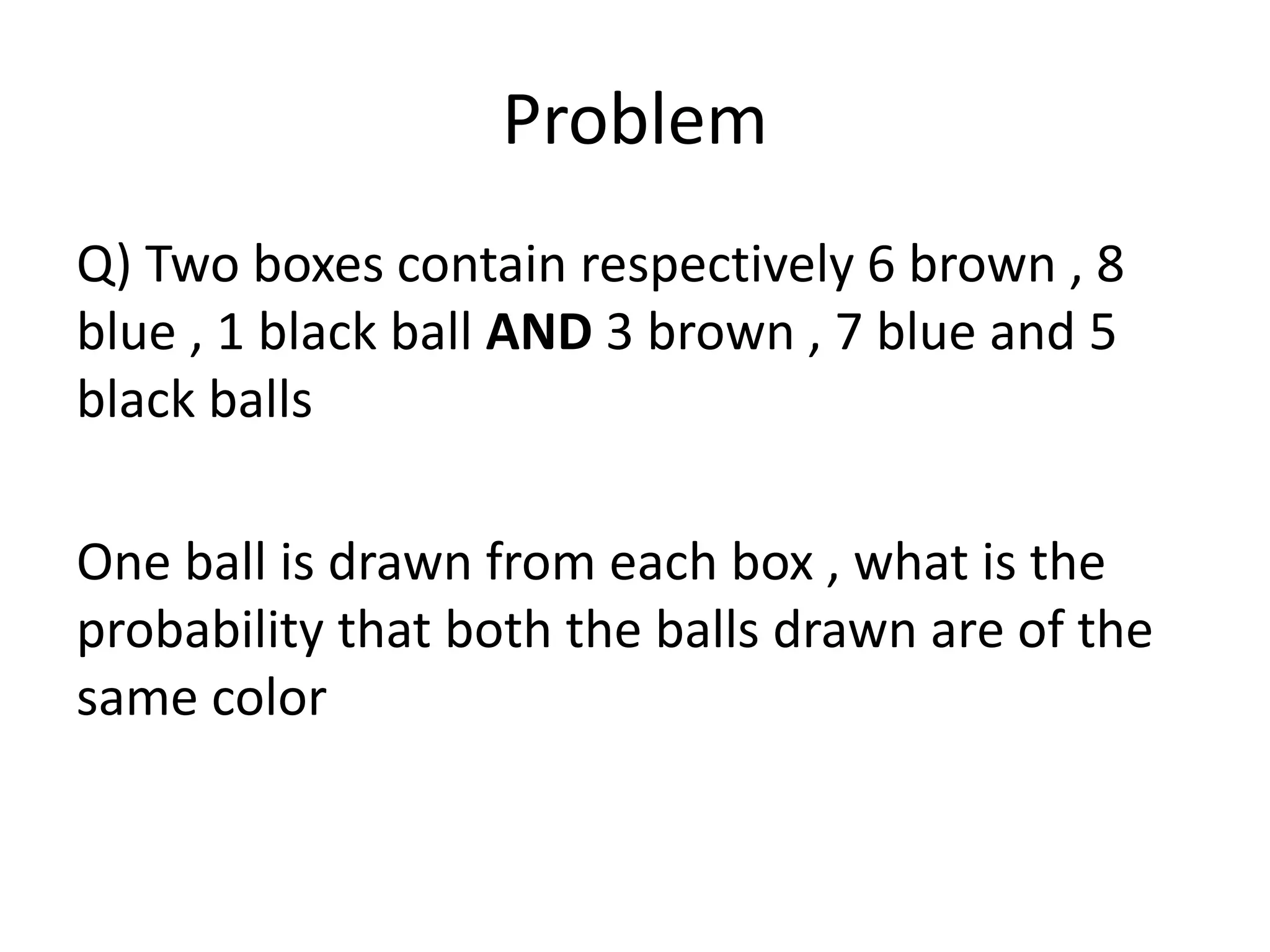Basic probability concepts are introduced including experiments, outcomes, events, sample space, and definitions of probability. Probability is defined numerically between 0 and 1. Key terms like elementary events, joint events, and mutually exclusive events are explained. Formulas for calculating probability of single events, multiple events, unions, and intersections of events are provided. Venn diagrams are used to illustrate relationships between events. Examples demonstrate calculating probability for independent and dependent events using multiplication rules and conditional probability.

































